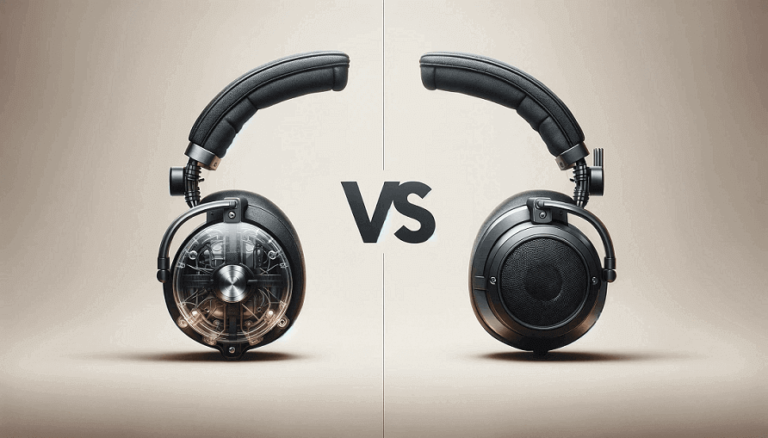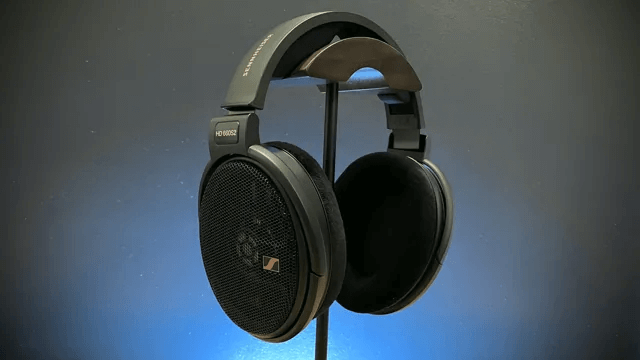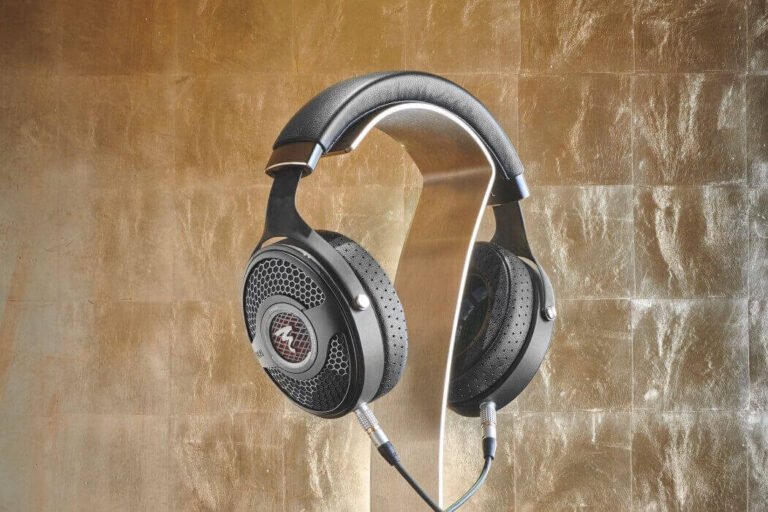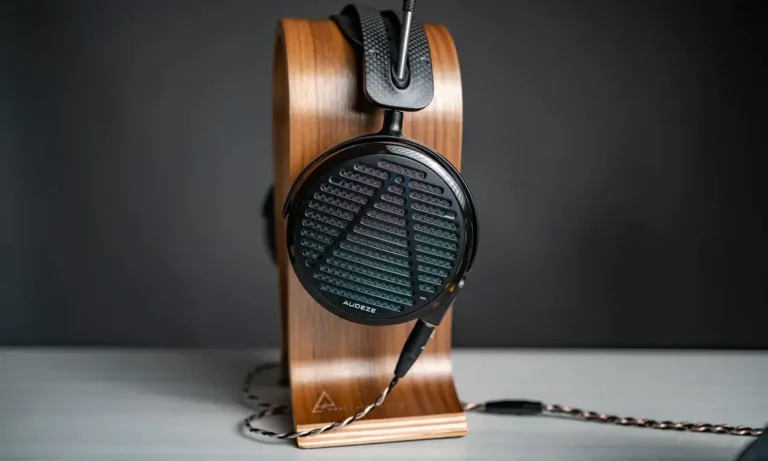Are Open-Back Headphones Good for Gaming? Gamers’ Ultimate Guide
Open-back headphones have been a topic of interest for gaming enthusiasts due to their specific sound characteristics.
This article aims to delve into the features of open-back headphones, evaluate their suitability for gaming experiences, and provide readers with an informed perspective on whether these headphones can truly enhance their immersive gaming experience.
We’ll cover aspects such as sound quality, comfort, and spatial awareness – all critical factors for gamers. This comprehensive assessment should serve as a guide for those considering open-back headphones for their gaming setups.
Understanding Open-Back Headphones
Open-back headphones, as the name suggests, have backs that are not completely closed. This design allows air to pass through the ear cups to the speaker element, avoiding any pressure build-up that could impact the sound quality.
At the core of their functioning, these headphones are engineered to provide a more natural or speaker-like sound, with a wider sense of space and depth.
The openness allows sound waves to move freely, leading to less distortion and generally producing a clearer, more authentic audio reproduction.
However, this design also means that they leak sound to the outside world and allow ambient noise to enter, which might not be ideal for everyone. Understanding their unique sound output and operational mechanics is crucial when considering open-back headphones for gaming.
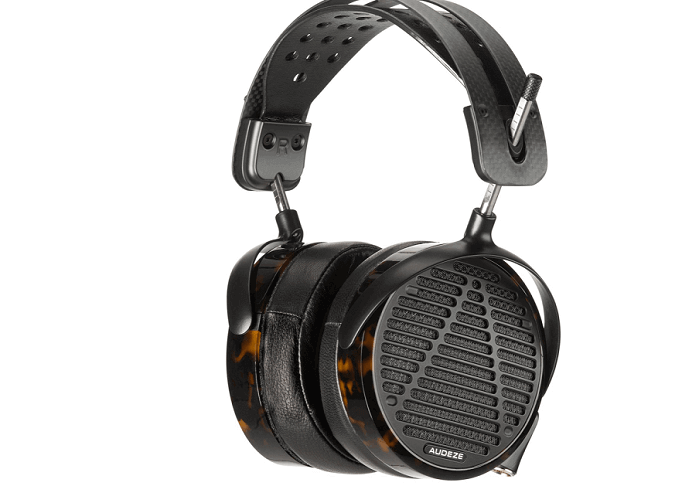
Benefits of Open-Back Headphones for Gamers
Open-back headphones offer several advantages that can significantly enhance a gamer’s experience. Firstly, they deliver superior soundstage or spatial sound awareness compared to their closed-back counterparts.
This is particularly beneficial for gamers as it allows them to identify the direction and distance of in-game sounds. For instance, in battle royale games like “
Limitations of Open-Back Headphones for Gaming
Despite their numerous advantages, open-back headphones also present a few potential downsides, particularly when used for gaming.
One of the main concerns is their sound leakage. Due to their open design, these headphones allow sound to escape, which can disturb people nearby, especially in quiet environments.
Another potential issue is that they do not provide much noise isolation, making them less than ideal for environments with significant background noise.
In competitive gaming scenarios, where every detail matters, the inability to block out ambient noise could lead to distractions and a compromised gaming experience.
Additionally, the natural and broad soundstage of open-back headphones might not be preferred by gamers who favor aggressive and more pronounced bass, typically offered by closed-back counterparts.
Addressing the Obstacles
To mitigate these limitations, gamers can consider a hybrid approach. For instance, using open-back headphones in quieter environments or during gameplay that requires a high degree of sound localization and spatial awareness.
In contrast, closed-back headphones could be used in noisier environments or for games that benefit from a bass-heavy audio experience.
Combining the usage of both types of headphones can provide gamers the flexibility to choose the right tool for the situation, thereby maximizing their overall gaming experience.
Furthermore, advancements in headphone technology are continually improving the quality and variety of sound reproduction, offering promising features for both open-back and closed-back headphones.
Choosing the Right Open-Back Headphones for Gaming
When choosing the right open-back headphones for gaming, several key factors should be considered.
Sound Quality
The primary focus should be on the sound quality. Look for headphones that offer a detailed, clear, and wide soundstage to help with spatial awareness in games.
Comfort
Gaming sessions can last several hours, so comfort is crucial. Look for headphones with padded ear cups and adjustable headbands to provide a comfortable fit for extended use.
Build Quality
Durability is an important factor to consider. Ensure the headphones are robustly built to withstand long hours of gaming.
Price
Cost is a significant criterion. Choose a pair of headphones that offer good value for their price, providing the best balance between sound quality, comfort, and durability within your budget.
Connectivity
Depending on your setup, you may prefer wired or wireless headphones. Remember that while wireless headphones offer freedom of movement, they also require regular charging.
Compatibility
Finally, make sure the headphones are compatible with your gaming system. Most models work with a standard audio jack, but some gaming consoles might require specific connections or adapters.
Choosing the right open-back headphones involves careful consideration of these factors and a bit of research. It’s a worthwhile investment for an enhanced, immersive, and enjoyable gaming experience.
Caring for Your Open-Back Headphones: A Step-by-Step Guide
Handling
Always handle your headphones with care. They are delicate devices. When not in use, hang them on a headphone stand or place them in their protective case.
Cleaning
Regularly clean your headphones. Use a soft, dry cloth to wipe the ear cups and headband. Avoid using any harsh chemicals, as they can damage the material.
Cable Management:
Be mindful of the headphone cables. Avoid severe bending or wrapping them around the headphones, which could damage the wires over time.
Avoid Moisture
Keep your headphones away from water and high humidity. Moisture can damage the electronics inside.
Storage
When traveling, use a hard case to protect your headphones. It helps avoid any damage from impact or pressure in your bag.
Do’s and Don’ts: An Animated Guide
DO
Regularly inspect your headphones for any signs of wear or damage. This includes checking the cable for any kinks or fraying.
DON’T
Don’t expose your headphones to extreme temperatures. High heat can damage the internal components, while cold can make the materials brittle.
DO
Concerning volume levels, do keep them at a reasonable volume. Excessively loud volume can damage the speakers and your hearing.
DON’T
Don’t wear your headphones during physical activities like running or working out. Sweat can get into the open-back design and cause damage.
Alternative Solutions
While open-back headphones have their unique advantages, there are alternatives available for gamers who find the disadvantages of these headphones outweigh their benefits.
Closed-Back Headphones
These headphones offer superior noise isolation and enhanced bass, ideal for gamers who prefer immersive, undisturbed gameplay. While they might lack the wide soundstage of open-back headphones, some high-end models provide respectable spatial sound awareness.
Gaming Headsets
These are specifically designed for gamers, incorporating features like integrated microphones for in-game communication and customizable sound profiles for different game genres. They are available in both open-back and closed-back designs.
In-Ear Monitors (IEMs)
For gamers who prioritize portability and discretion, IEMs can be a suitable choice. High-quality IEMs can offer excellent sound reproduction and noise isolation, although the soundstage might not be as expansive as that of over-ear headphones.
Speaker Systems
For those not fond of wearing headphones, gaming speaker systems can deliver a surround sound experience that provides good spatial awareness. However, they require more space and may not be suitable for shared or noise-sensitive environments.
Remember, the perfect audio solution for gaming depends on individual preferences, the gaming environment, and the specific requirements of the games being played.
Comparing Open-Back and Closed-Back Headphones for Gaming
When comparing open-back and closed-back headphones for gaming, it’s essential to understand their inherent strengths and weaknesses.
Open-Back Headphones:
Open-back headphones are praised for their wide soundstage, which makes them ideal for games that demand spatial awareness. The open design allows for natural sound flow, creating an immersive and realistic audio experience.
However, they don’t offer much noise isolation, which means they may not be the best choice for noisy environments. Also, sound leakage can disrupt people nearby, limiting their use in shared spaces.
Closed-Back Headphones:
Closed-back headphones, on the other hand, excel in noise isolation. They provide immersive gameplay by blocking out external noise, ensuring that you hear every detail without interruption. They also prevent sound leakage, so you can game without disturbing others.
However, their soundstage isn’t as broad as in open-back headphones, making the audio feel more “in your head” rather than coming from around you. They can also become warm after extended use due to their closed design.
In summary, the choice between open-back and closed-back headphones depends primarily on your gaming needs. If you value an expansive, realistic soundstage and can game in a quiet environment, open-back headphones might be the best choice.
Conversely, if you value noise isolation and often game in noisy settings, or you want to ensure that your audio doesn’t disturb others, closed-back headphones could be the superior option.
Final Thoughts
In conclusion, open-back headphones offer a gaming experience that’s like having surround sound for your ears! It’s all about that wide soundstage and natural audio flow, taking your gameplay to a whole new level of immersion.
But hey, keep in mind that if you’re gaming in a noisy or shared environment, you might want to consider alternatives like closed-back headphones, gaming headsets, or even speaker systems to keep the peace. Ultimately, it’s all about finding the perfect fit for your gaming needs and preferences.
Open-back headphones may not be for everyone, but for those who crave that wide soundstage and immersive experience, they’re definitely worth considering


